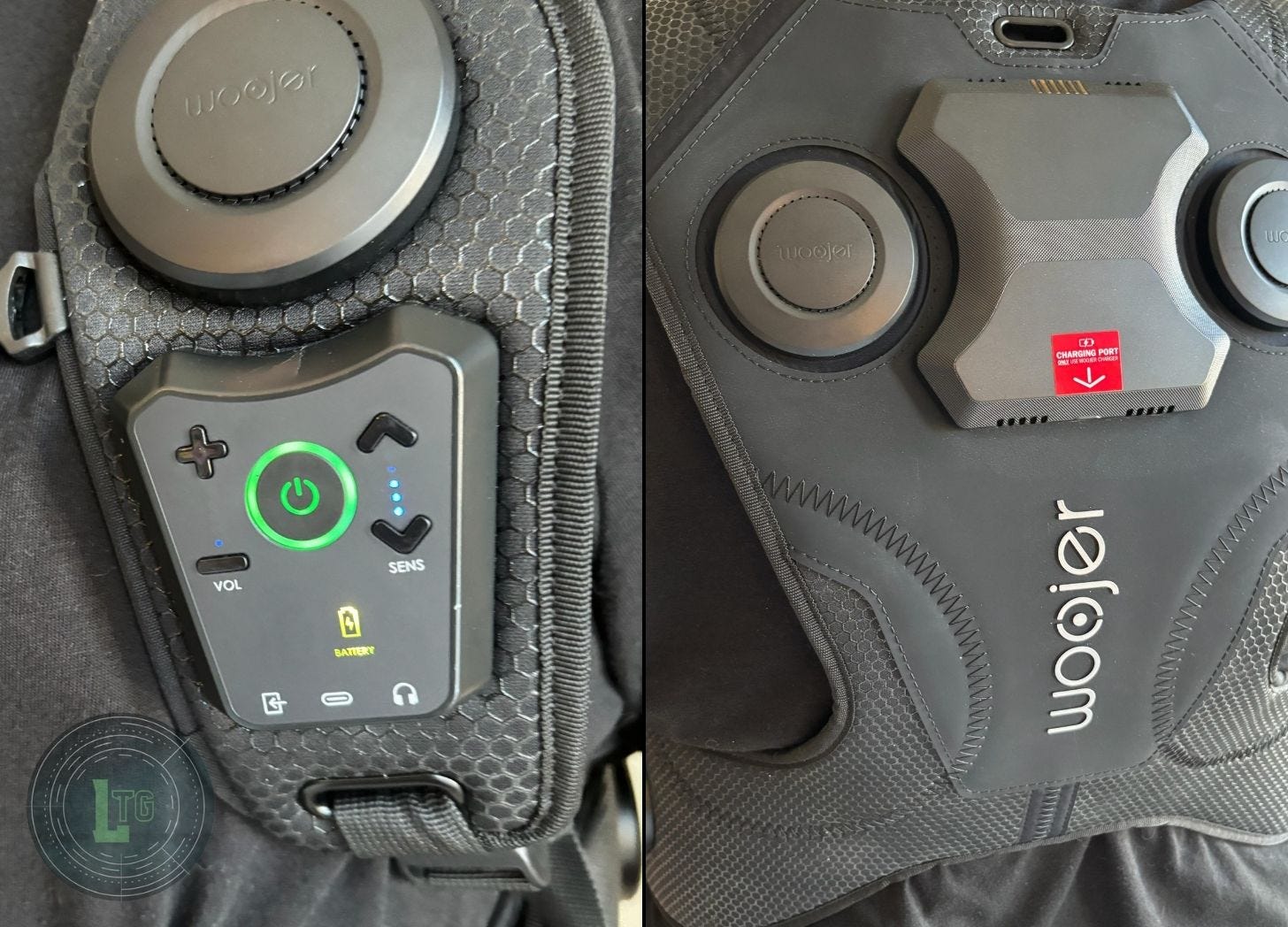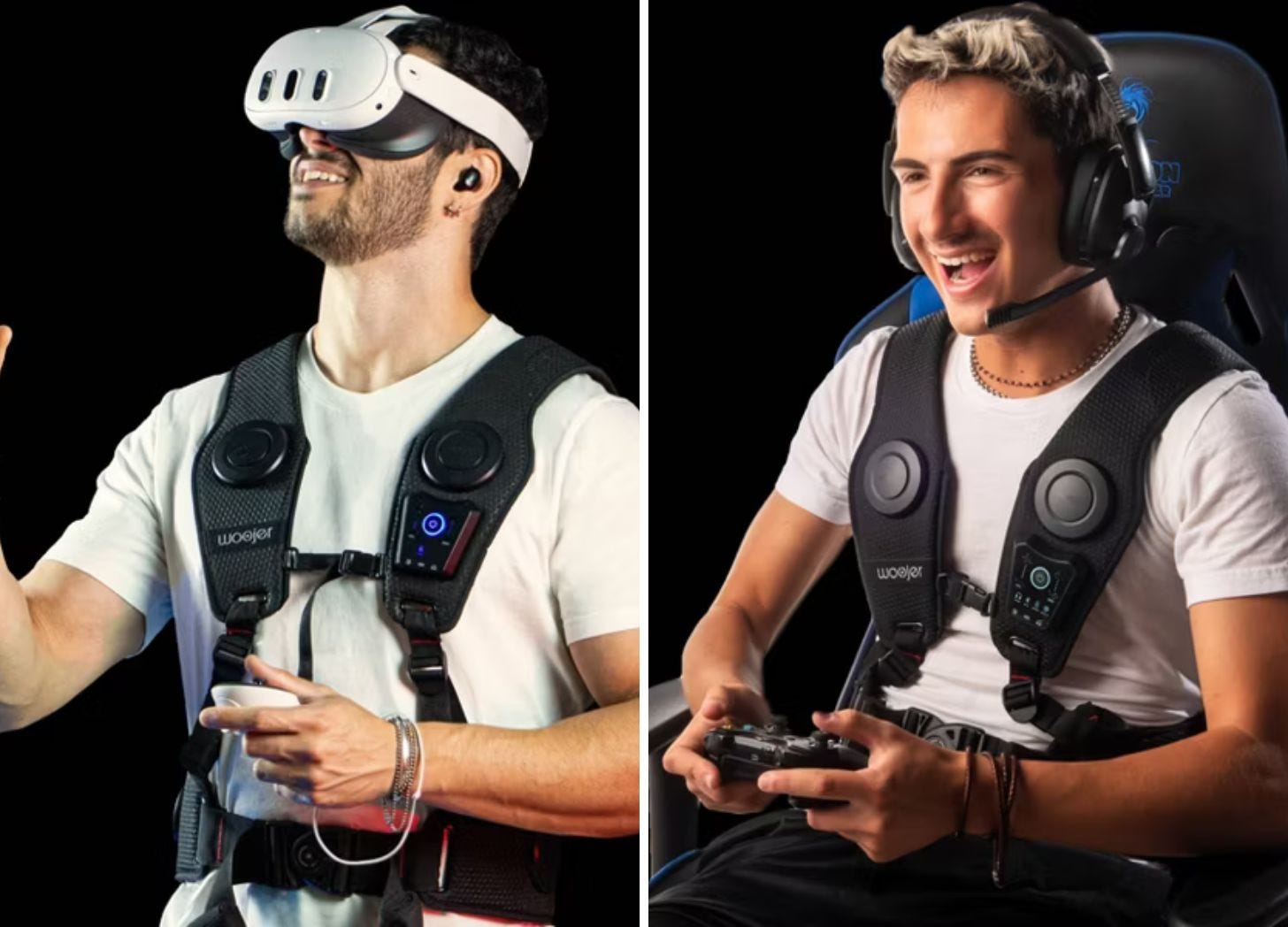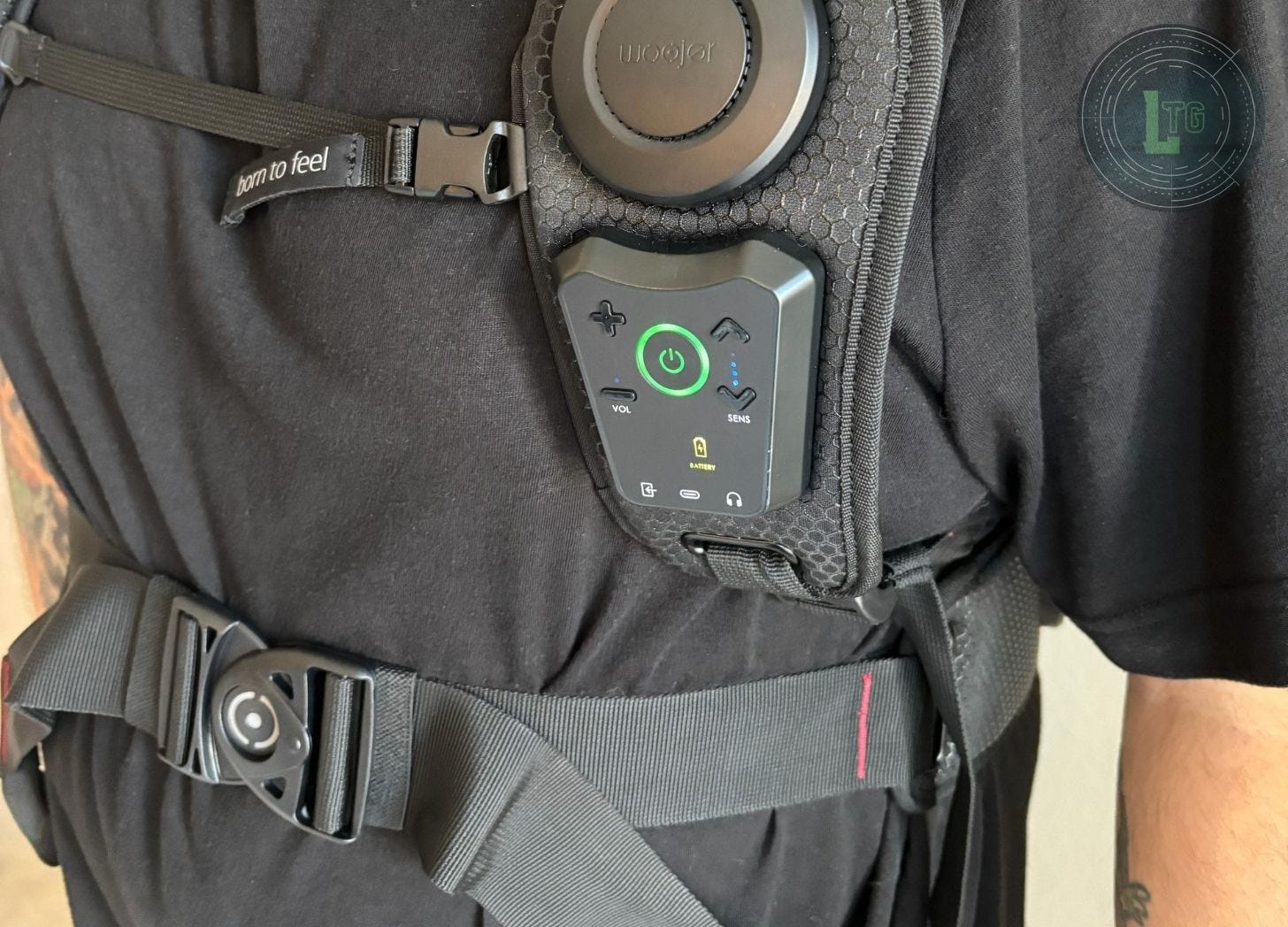The Woojer Vest 3 Feels Like an Unfinished Prototype of a More Immersive Concept
It's fine, but not the best version of what it could be
A mostly-fun peripheral with a few quirks
Specs:
+ Six Osci™ TRX2 transducers
+ Bluetooth, USB-C, and 3.5 mm connectivity
+ 1 to 250Hz frequency
+ Fast-charging
Immersion has always been a key part of the entertainment experience. Game developers and filmmakers achieve it in different ways, through brilliant storytelling and relatable characters or by physically pulling players into their worlds. For gaming, VR is arguably the most immersive option as players literally become heroes hailing from distant lands. But there's an element missing. While your mind may be transported to the mean streets of Gotham or the belly of a Xenomorph-infested ship, your body is still safe and sound in the comfort of your own home.
The concept behind the Woojer Vest 3 is to bridge that gap, allowing you to, in a sense, feel what you’re playing, watching, or listening to. Catering to movies, music, and video games, the vest reacts with haptic feedback that responds to the most prominent audio cues. Equipped with six transducers, the Vest 3 sends signals to each sensor to simulate getting pelted with enemy fire or the vigor of a rising bass. You’ll feel the impact of a tanker exploding on Fury Road or the opening bass added to I Got 5 On It.
As I sit here listening to the most dramatic version of the Ghostbusters theme song I could find, the Woojer Vest 3 pounding at my body, I can’t help but question: Is this the best version of this device? The Woojer Vest 3 is an example of where concept and execution veer onto different paths. On one hand, a vest that further engrosses us in our favorite media sounds like a great way to connect with the art. On the other hand, how Woojer executes this concept feels like a shortcut that could have been fine-tuned to better appeal to one major market: Gamers.
Wired is the Way to Go (Unfortunately)
Before getting into what works and what doesn't, I want to touch on the immediate issue with the Vest 3. It works with Bluetooth connectivity, using an A2DP standard to connect to an input and output device. Audio quality is fine enough, though it is certainly a step down from just listening to music through headphones without the middleman. Using a headset or some Bluetooth audio device is required, should you actually want to hear what you’re watching or playing. The vest connects to the computer and acts as an audio output. Since it has no speakers of its own, you need to supply an input that connects to the vest’s control unit on the left side, which does feel a little cheap.
Using Bluetooth to connect all components resulted in lower-quality audio and lag. Even when swapping to a 3.5mm cable for my headset, there was still a delay between what was happening and what I heard. It was slow enough that it rendered the vest a hindrance when trying to game. I had a little more luck with quality and delays using the dedicated Woojer app, though it’s only really good for listening to music.
The only stable connection was via a USB-C cable plugged into the vest and a headset connected via 3.5mm. While I had cords long enough for both, I’ve become so used to being tether-free that I immediately forgot that I couldn’t move far or shift without risking ripping the USB-C cable out of the control unit.
The same issues present themselves when using the Vest 3 with a console. For the PS5, the audio routes through the controller, increasing the delay. Having a native audio output built into the vest, like speakers near the shoulder blades, could eliminate some of that delay and really simulate that surround-sound effect Woojer is gunning for.
What Are You Vibrating For?
When I hear "vest with haptic feedback," I immediately envision what I'll call a VooDoo Doll effect. The character onscreen is hit with a bullet or sword, and that impact translates to one of the independently operated nodes on the player's body. When it's an explosion, every sensor fires off. But otherwise, everything is still. Understandably, that requires some involvement at the development level, as the game needs to send a signal to the vest to tell it to react. It's what you'll find with OWO Skin, an alternative that's less a vest and more an upper-body skin suit.
With the Woojer Vest 3, it's important to taper or shift expectations. It’s not quite the immersive experience it aims to be. Feeling every sensor wildly fire off because I’m in the middle of a loud environment doesn’t really sink me into the experience. It just adds to the cacophony of sensory elements without emphasizing any one in particular. That it responds to overall audio rather than specific sound cues ensures that it will almost constantly be vibrating.
It will react to dialogue, especially if a character has a big booming voice (playing Gears of War was certainly interesting), and even the low hum of background music. On the lowest haptic setting, it felt like the vest was still constantly buzzing along as I traversed empty terrain, watched dialogue-heavy moments, and reached the valley of a crescendo. It should only kick in at the peak, elevating those impactful moments like when the hero is peppered with bullets or a car slams into oncoming traffic. I want to feel those moments above anything else.
Ultimately, I felt less like I was part of the action and more like I was sitting in a malfunctioning vibrating chair outside Sharper Image.
A Fine, but Potentially Awkward, Fit
I am on the heftier side and was a little surprised the vest had adjustments that would make it too big for me. It's good to see an attempt at inclusivity, though it's worth noting that the vest may fit differently for some body types. Very short, taller, or even broader builds may find the haptic sensors lying awkwardly. At 5’11” and redacted lbs, they landed where it felt like they should. There are two haptic sensors on the back, though you can sit back without them hindering comfort.
There are two adjustable straps that adjust how tight the vest is around your waist and abdomen, as well as two that lengthen the sides. Despite feeling stiff in your hands, the Vest 3 is surprisingly comfortable and flexible where it needs to be. The fabric is light and breathable, though I don’t see anyone beyond VR players getting overheated while using it.
Do You Need It?
The Woojer Vest 3 is a victim of a good idea and somewhat poor execution. The box touts all manner of buzz phrases that sound great in marketing, like up to a 250Hz frequency, advanced audio haptic synchronization, and advanced DSP control. Unfortunately, when the very core of a device doesn’t work well, none of that matters. The audio delay just really took me out of the experience.
When it comes to reacting solely to sound, it’s possible I’m a little spoiled. Coming off reviewing Razer’s Aether Light Bars and having used Govee’s AI Sync Kit in the past, I’m used to things reacting to what’s happening on screen. I just feel that’s the best way this vest could be utilized, though that is a much more complicated process. That requires partnerships with developers and is harder to implement than a small control box that routes audio. It would also likely cut functionality for movies and music, though I don’t think that’s much of a loss.
For what it’s intended to do, when I was wired into everything, the sensors responded accurately and rather intensely. Admittedly, I did appreciate the added vibration during Gears 5’s firefights and thought it was a nice touch while cruising around Forza Horizon 5. Partnerships for Call of Duty and Fortnite-branded vests really drive home who Woojer is catering to. It’s less the casual players and more the competitive esports crowd that’s constantly looking for ways to enhance their gameplay experience.
When I was tethered in, the vest performed well with no noticeable lag. So long as you don’t mind potentially needing to be connected to wires, the haptics can elevate the energy of the battlefield or the tension of an exchange of gunfire.





